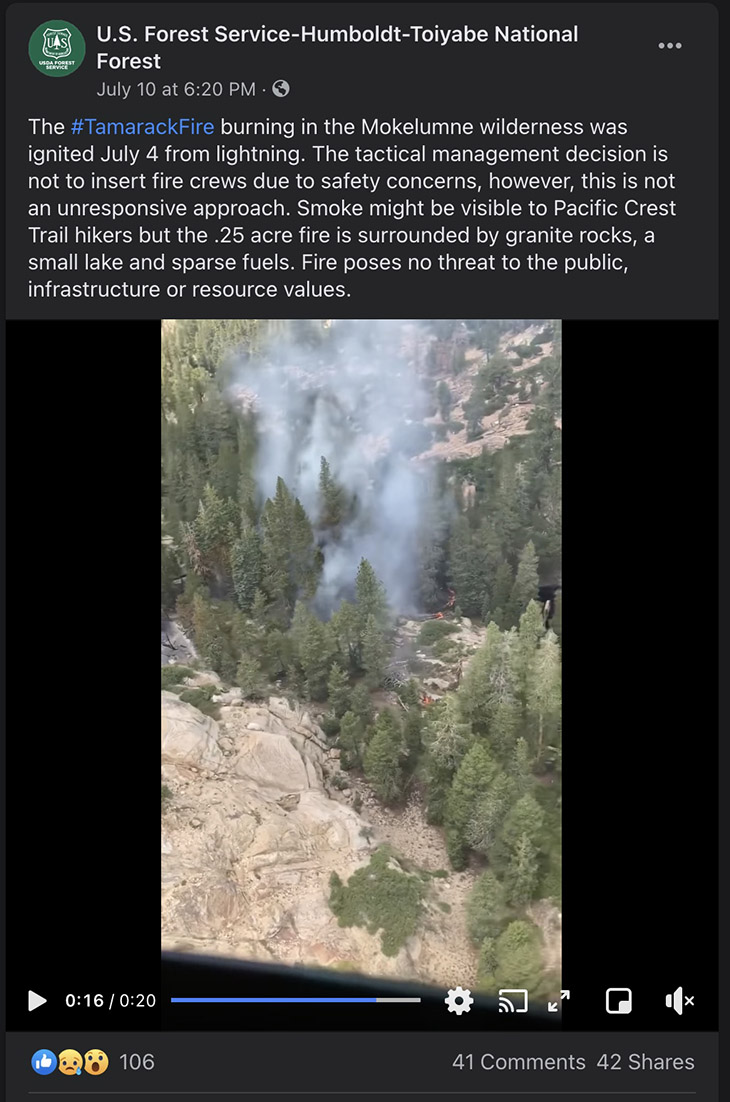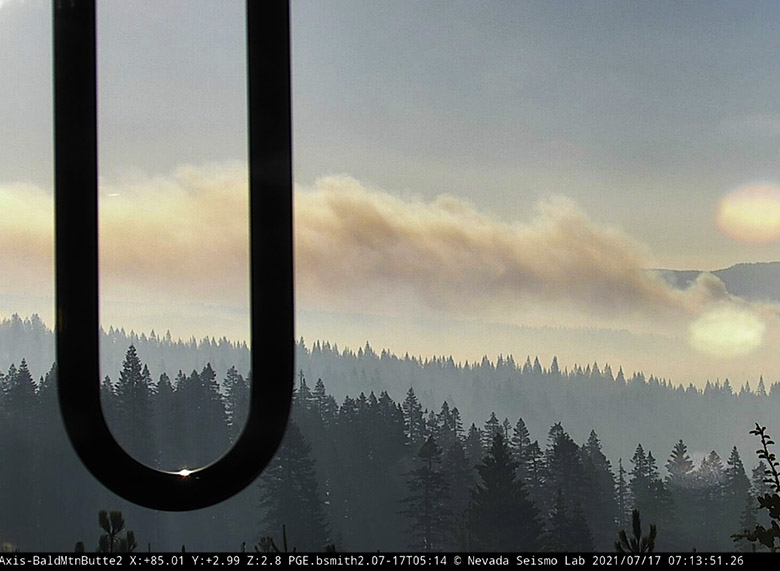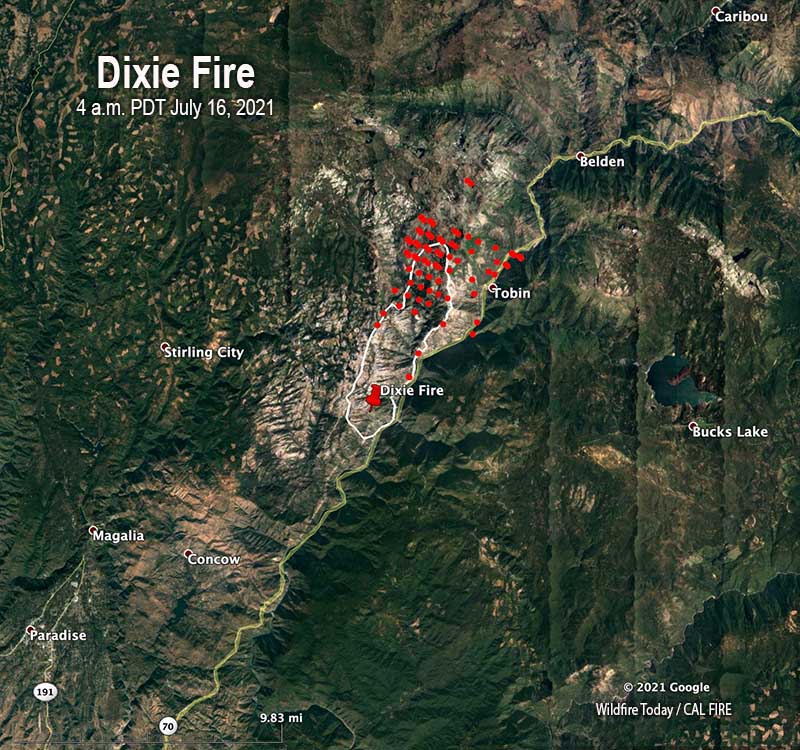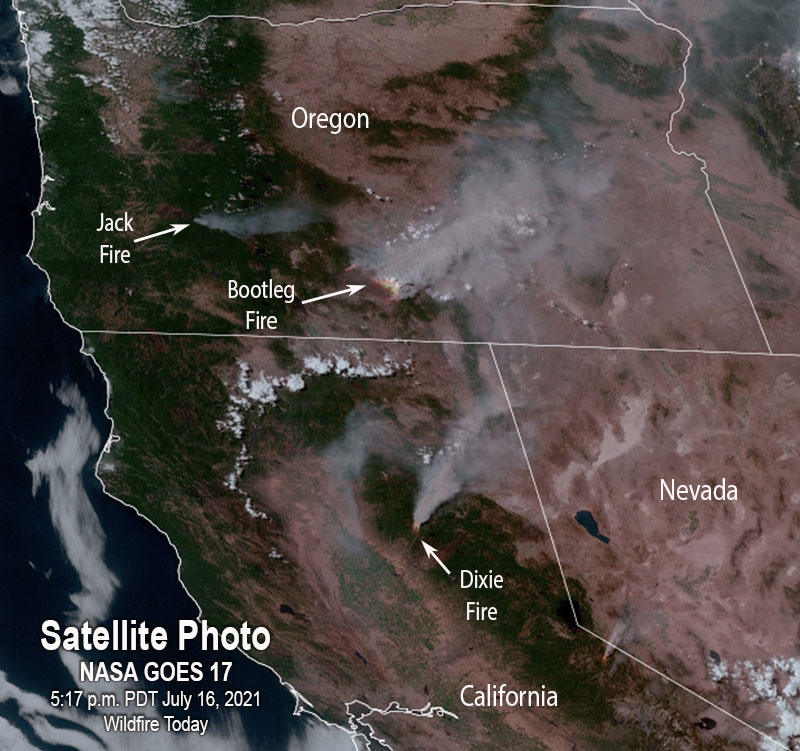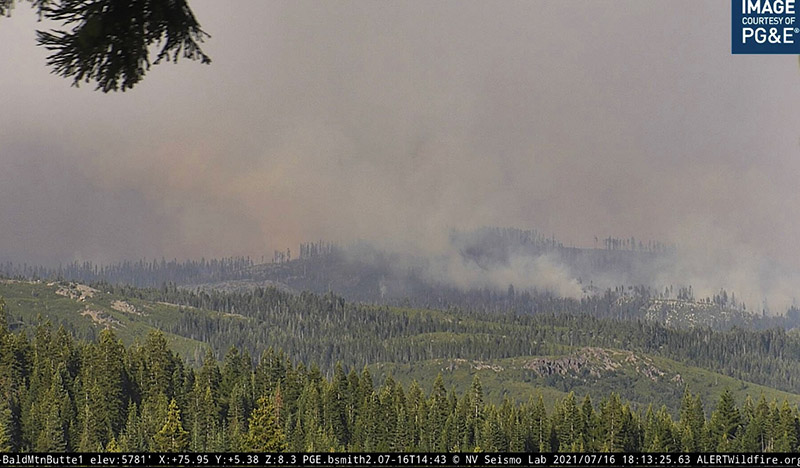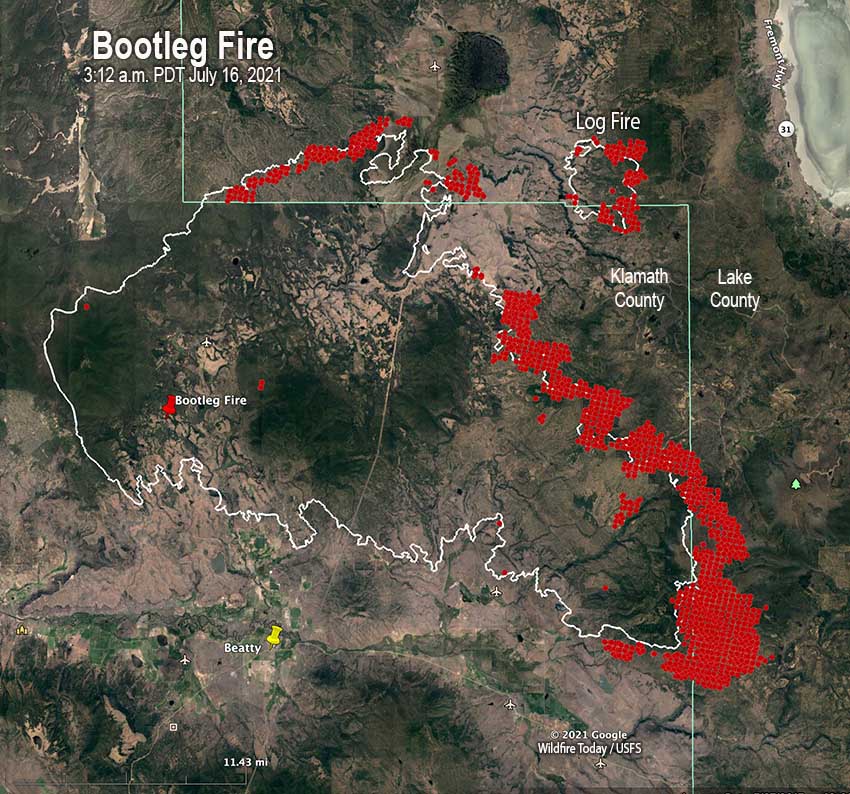Updated at 5:03 p.m. PDT July 17, 2021

We have a new map for the Tamarack Fire showing data from a satellite overflight at 2:12 p.m. PDT July 17.
To see all articles on Wildfire Today about the Tamarack Fire, including the most recent, click HERE.
Updated at 3:48 p.m. PDT July 17, 2021

The Tamarack Fire, like many of the other recent wildfires in California and Oregon is cranking Saturday afternoon. Photographer Craig Philpott has video of it moving east at a rapid rate of spread across Highway 89 north of Markleeville, south of Airport Road .
An update from Alpine County at 3:13 p.m. Saturday said 7,000 acres have burned and 2 structures were destroyed. Aerial firefighting is limited by dense smoke. Also:
Mandatory evacuations are in place for the following areas: Grover Hot Springs, Shay Creek, MarkleeVillage, Markleeville, Carson River Resort, & Poor Boy Road area, Wolf Creek Campground, Silver Creek Campground, ADDITIONALLY Sierra Pines, Upper and Lower Manzanita, Crystal Springs, Alpine Village, Diamond Valley Road and Hung-a-lel-ti are now under mandatory evacuations. “The Mesa” is under a voluntary evacuation but conditions are changing fast. Please stay out of these areas to allow emergency personnel to do their jobs.
It is my understanding that this time of year in this part of California fires are often pushed to the northeast. Out ahead of the Tamarack Fire in that direction there is not much recent history of fires. Under the present conditions of dry fuels, high temperatures, and low humidity, those 30+ year old fire footprints from the 1980s are not likely to provide much of a barrier.

The image below shows the track of an Air Attack aircraft which supervises other aerial firefighting aircraft and provides real time situational awareness about the fire to personnel on the ground. Presumably the fire, or at least the most dense smoke, is inside the U-shaped flight path.

9:07 a.m. PDT July 17, 2021

The Tamarack Fire spread for about five miles Friday after it had been in a monitoring status for 13 days while it was very small. It moved northeast and according to heat sensing data from satellites very early Saturday morning appeared to have come very close to the community of Markleeville and Highway 89.
The Alpine County Sheriff’s Office reported at about 8 a.m. Saturday that the fire was 6,600 acres, three structures had burned, and, “This is a serious situation. Please get out when advised to.” They also advised to not rely on Facebook for evacuation notifications.
The Humboldt-Toiyabe National Forest updated InciWeb at 8 a.m. Saturday:
Highway 89, 88 and 4 are closed in the fire area. Evacuations are in place for Markleeville, Grover’s Hot Springs Park and Campground, Shay Creek, Markleeville Village and East Fork Resort. Residents can sign up for evacuation notifications at https://alpinecountyca.gov/204/Sheriff. Evacuees can report to Alpine County School in Paynesville.
According to satellite data at 3:42 a.m. PDT July 17, 2021, the fire was very close to Markleeville, 5 miles south of Woodfords, and 18 miles south of South Lake Tahoe.

Below is a still image of a Forest Service Facebook post with a video of the fire when it was a quarter acre on July 10, six days after it started. “Fire poses no threat to the public, infrastructure, or resource values,” they wrote.
The satellite photo below taken at 6:41 p.m. PDT July 16 shows a large smoke plume created by the Tamarack Fire.

